
PROCEEDINGS OF THE INSTITUTION OF MECHANICAL ENGINEERS PART D-JOURNAL OF AUTOMOBILE ENGINEERING
Scope & Guideline
Accelerating Research in Automotive Technology
Introduction
Aims and Scopes
- Automotive Engineering Innovations:
The journal emphasizes cutting-edge research in automotive engineering, including the development of new materials, structures, and designs tailored for enhanced vehicle performance and safety. - Control Systems and Algorithms:
A significant focus is placed on the control systems used in vehicles, including advanced algorithms for autonomous driving, stability control, and energy management in hybrid and electric vehicles. - Sustainability and Efficiency:
Research addressing fuel efficiency, emissions reduction, and sustainable automotive technologies is a core area, reflecting the industry's shift towards greener technologies. - Vehicle Dynamics and Safety:
The journal publishes studies on vehicle dynamics, stability, and safety systems, with a focus on occupant protection during collisions and the optimization of safety features. - Modeling and Simulation:
A strong emphasis is placed on the use of modeling and simulation techniques to predict vehicle performance and behavior under various operating conditions. - Human Factors and Ergonomics:
The journal also explores human factors in vehicle design, including driver behavior, comfort, and safety, ensuring that engineering solutions meet user needs.
Trending and Emerging
- Electric and Hybrid Vehicle Technologies:
Research on electric and hybrid vehicles is rapidly increasing, focusing on battery management, energy efficiency, and integration of renewable energy sources into vehicle systems. - Autonomous Driving Systems:
There is a significant rise in studies related to autonomous driving technologies, including machine learning algorithms for decision-making, trajectory planning, and sensor integration. - Smart Vehicle Systems and Connectivity:
Emerging technologies such as Vehicle-to-Everything (V2X) communication and smart vehicle systems are gaining traction, promoting enhanced safety and traffic efficiency. - Advanced Materials and Lightweight Structures:
Research into advanced materials, particularly those that reduce vehicle weight while maintaining safety and performance, is becoming increasingly prominent. - Vehicle Safety and Crashworthiness Innovations:
Innovations in safety technologies, including advanced airbag systems and crashworthiness design, are trending as manufacturers seek to enhance occupant protection. - Data-Driven Approaches and AI in Vehicle Design:
The application of data analytics and artificial intelligence in vehicle design and performance analysis is emerging, driven by the need for smarter and more efficient automotive solutions.
Declining or Waning
- Traditional Internal Combustion Engine Studies:
There has been a noticeable decline in research focusing solely on traditional internal combustion engine technologies as the automotive industry increasingly pivots towards electrification and hybrid systems. - Conventional Materials Research:
The exploration of conventional materials in automobile construction has decreased, likely due to the industry's shift towards lightweight and advanced composites that offer better performance and sustainability. - Basic Mechanical Systems Analysis:
Research centered on basic mechanical systems without integration of modern technologies or innovations has waned, reflecting a trend towards more complex, integrated systems in vehicle design. - Static Safety Testing Methods:
There is a reduced emphasis on static safety testing methods, as the field moves towards dynamic and real-world testing scenarios that better reflect actual driving conditions.
Similar Journals

Automotive Innovation
Exploring Groundbreaking Trends in Automotive DesignAutomotive Innovation is a leading academic journal dedicated to the advancements and transformative trends in the field of automotive engineering. Published by SpringerNature, this esteemed journal boasts an impressive Q1 ranking in Automotive Engineering for 2023, reflecting its high impact and relevance with a rank of #17 out of 125 in the Scopus database, placing it in the 86th percentile. Focused on publishing cutting-edge research from 2018 to 2024, it serves as an essential platform for researchers, professionals, and students interested in exploring the latest innovations, technologies, and practices in automotive design, manufacturing, and sustainability. Though not an open access journal, its commitment to advancing knowledge in automotive engineering makes it an invaluable resource for anyone invested in the future of transportation. For further insights and research findings, the journal can be accessed at its editorial office located in the United States.
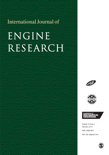
International Journal of Engine Research
Exploring the Frontiers of Mechanical and Ocean EngineeringWelcome to the International Journal of Engine Research, an esteemed publication dedicated to advancing the fields of Aerospace Engineering, Automotive Engineering, Mechanical Engineering, and Ocean Engineering. Published by SAGE Publications Ltd and based in the United Kingdom, this journal has earned a prestigious reputation, consistently ranking in the Q1 quartile in several engineering categories as of 2023. The journal's impact is evident through its high Scopus rankings, positioning it within the top 25% of global research in Aerospace and Automotive engineering, and within the top 20% for Mechanical engineering. With a commitment to publishing rigorous, peer-reviewed research from 2000 to 2024, the International Journal of Engine Research plays a vital role in fostering innovation and collaboration within the engineering community. Although this journal does not offer open access, it remains a critical resource for researchers, industry professionals, and students striving to deepen their understanding in these dynamic fields.

Vehicles is a pioneering open access journal published by MDPI since 2019, dedicated to advancing knowledge in the fields of Automotive Engineering and Electrical and Electronic Engineering. Based in Switzerland, the journal provides a valuable platform for researchers, professionals, and students to disseminate high-quality, peer-reviewed research across essential areas of vehicle technology and innovation. With an impressive Q2 ranking in both Automotive Engineering and Electrical and Electronic Engineering as of 2023, and a notable placement in the Scopus rankings (Rank #37/125 and #320/797, respectively), Vehicles plays a critical role in fostering collaboration and knowledge exchange within these fast-evolving disciplines. Through its commitment to Open Access, Vehicles ensures that cutting-edge research is accessible to a global audience, thereby contributing significantly to the collective understanding and development of sustainable transportation solutions. Situated at the crossroads of engineering innovation and practical application, Vehicles invites contributions that explore contemporary challenges and promote transformative advancements in the automotive sector.
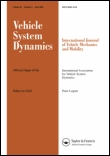
VEHICLE SYSTEM DYNAMICS
Exploring the future of safe and efficient vehicle design.VEHICLE SYSTEM DYNAMICS, published by Taylor & Francis Ltd, is a premier journal dedicated to advancing the field of automotive and mechanical engineering. With an impressive impact factor and categorized in the top quartiles (Q1) of Automotive Engineering, Mechanical Engineering, and Safety, Risk, Reliability, and Quality, this journal has established itself as a vital resource for researchers, industry professionals, and academics alike. Spanning from 1972 to 2024, VEHICLE SYSTEM DYNAMICS focuses on disseminating high-quality, peer-reviewed research that addresses critical challenges and innovations in vehicle dynamics and system performances. The journal is based in the United Kingdom and continues to contribute significantly to the global discourse on safe and efficient vehicle design and operation. Readers can access the journal's content through various platforms, ensuring the latest research is readily available to inform and inspire future advancements in the field.

SAE International Journal of Commercial Vehicles
Pioneering Research for Tomorrow's Commercial VehiclesSAE International Journal of Commercial Vehicles, published by SAE International, stands at the forefront of automotive engineering research, fostering innovation and development in the commercial vehicle sector. With an ISSN of 1946-391X and an E-ISSN of 1946-3928, the journal plays a critical role in disseminating high-quality research, theoretical advancements, and practical applications across various facets of commercial vehicles. As part of the notable SAE publication portfolio, it enjoys a respectable 2023 Q3 ranking within the automotive engineering category and holds a significant position at Rank #72/125 in Scopus, reflecting its growing impact and relevance. The journal's themes encompass innovative technologies, safety advancements, and regulatory developments, providing researchers and industry professionals with vital insights essential for tackling contemporary challenges. Though currently not an open-access publication, its contribution to the engineering community is invaluable, paving the way for future studies and collaborative efforts in the automotive field.
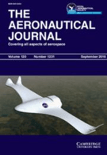
AERONAUTICAL JOURNAL
Advancing aerospace knowledge since 1969.Aeronautical Journal, published by Cambridge University Press, is a premier scholarly journal dedicated to advancing the field of aerospace engineering. With a notable impact factor, this journal holds a strong position in the academic community, ranked #53 out of 153 in the Scopus category of Aerospace Engineering, placing it in the 65th percentile. The journal has been providing a platform for groundbreaking research since its inception in 1969, and continues to be a vital resource for researchers, professionals, and students involved in aeronautics. As a Q2 journal in the 2023 Aerospace Engineering category, it offers high-quality articles that cover a range of topics within the discipline, contributing to the ongoing discourse and innovation in aerospace technologies. Although not an open-access journal, it remains accessible to a vast readership through institutional subscriptions and partnerships. The Aeronautical Journal is a crucial publication for those seeking to stay at the forefront of aerospace research and development.
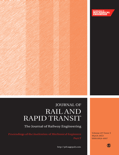
PROCEEDINGS OF THE INSTITUTION OF MECHANICAL ENGINEERS PART F-JOURNAL OF RAIL AND RAPID TRANSIT
Advancing the Future of Rail and Transit EngineeringPROCEEDINGS OF THE INSTITUTION OF MECHANICAL ENGINEERS PART F - JOURNAL OF RAIL AND RAPID TRANSIT is a premier academic journal published by SAGE Publications Ltd, focusing on the latest advancements in rail transportation and rapid transit systems. With an ISSN of 0954-4097 and E-ISSN of 2041-3017, this journal has garnered significant attention in the field, achieving a Q2 category ranking in Mechanical Engineering and securing a Scopus rank of #192 out of 672, placing it in the 71st percentile. Covering converged years from 1989 to 2024, it provides a platform for innovative research and discussions that address the complexities and evolving technologies within the rail industry. Its publication draws contributions from esteemed researchers, professionals, and students alike, fostering a crucial dialogue on sustainability, efficiency, and advancements in transit infrastructure. While the journal is not open access, it remains a vital resource for those committed to pushing the boundaries of mechanical engineering and rail systems development.
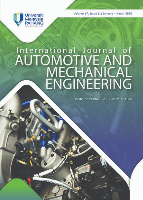
International Journal of Automotive And Mechanical Engineering
Connecting Global Minds in Engineering ExcellenceThe International Journal of Automotive and Mechanical Engineering (IJAME), published by Universiti Malaysia Pahang, serves as a premier platform for the dissemination of cutting-edge research in the fields of Automotive and Mechanical Engineering. Established in 2010, this Open Access journal not only ensures that high-quality research is freely accessible to the global community but also reflects its commitment to advancing knowledge in these crucial engineering domains. With an impressive standing in the 2023 Scopus Ranks, achieving a Q3 ranking in both Automotive Engineering and Mechanical Engineering, IJAME proudly showcases a diverse range of articles that address contemporary challenges and innovations. Positioned in Malaysia and aimed at researchers, professionals, and students alike, this journal invites contributions that explore the intersection of theory and practice within automotive technologies and mechanical design. Join a growing international community that is shaping the future of engineering through open collaboration and knowledge sharing.
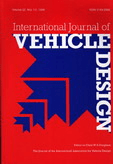
INTERNATIONAL JOURNAL OF VEHICLE DESIGN
Advancing Knowledge in Vehicle Design and PerformanceThe INTERNATIONAL JOURNAL OF VEHICLE DESIGN is a distinguished publication that has been at the forefront of automotive engineering and mechanical design since its inception in 1979. Published by INDERSCIENCE ENTERPRISES LTD in the United Kingdom, this journal aims to foster innovative research and technical knowledge in the field of vehicle design, encompassing various aspects from conceptualization to manufacturing and performance analysis. With an ISSN of 0143-3369 and an E-ISSN of 1741-5314, the journal extends its accessibility to a global audience, although it currently does not operate under an open access model. Recognized for its scholarly contributions, it holds a Q3 ranking in Automotive Engineering and a Q4 ranking in Mechanical Engineering as of 2023, reflecting its position among peers with an increasing impact in the discipline. Researchers, professionals, and students will find valuable insights and cutting-edge research in the articles published, contributing to a deeper understanding of advancing vehicle technologies and methodologies. For inquiries, the journal is based at the World Trade Center Building, 29 Route de Pré-Bois, Case Postale 856, CH-1215 Geneva, Switzerland, where one can also follow its developments and contribution to the growing body of knowledge in vehicle design.

Journal of the Brazilian Society of Mechanical Sciences and Engineering
Advancing the frontiers of mechanical engineering research.The Journal of the Brazilian Society of Mechanical Sciences and Engineering, published by Springer Heidelberg, is a pivotal platform dedicated to disseminating cutting-edge research in the realm of mechanical sciences and engineering. With an ISSN of 1678-5878 and an E-ISSN of 1806-3691, this journal showcases innovative findings across various categories, including Aerospace Engineering, Automotive Engineering, and Industrial and Manufacturing Engineering. Notably positioned in the Q2 and Q3 quartiles of its fields as of 2023, the journal highlights the importance of rigorous scientific inquiry, contributing significantly to the understanding and application of engineering principles globally. With a Scopus rank reflecting strong performance in multiple engineering disciplines, this journal serves as an invaluable resource for researchers, professionals, and students seeking to advance their knowledge and explore the frontiers of mechanical sciences. The journal covers a broad range of topics and aims to facilitate collaboration and synergy among experts in the field, enhancing the overall impact of mechanical engineering research.